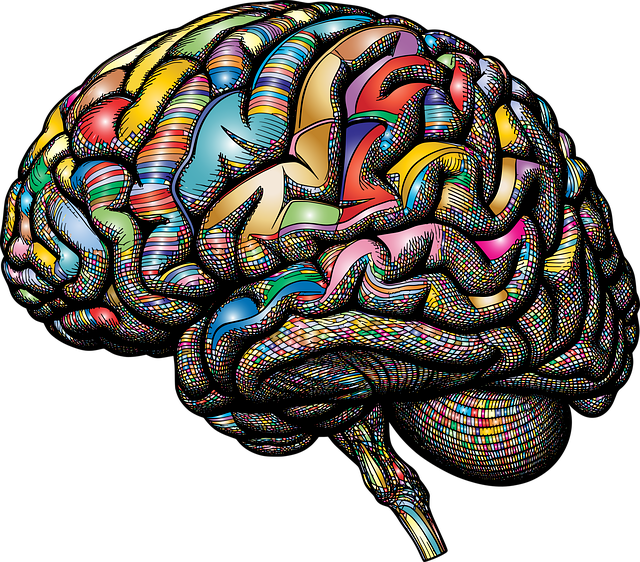Denver ASL Therapy: Enhancing Crisis Intervention Training for Better Support
Crisis Intervention Teams (CITs) in Denver, focusing on American Sign Language (ASL) therapy, revolu…….
Welcome to an in-depth exploration of Denver American Sign Language (ASL) Therapy, a specialized field dedicated to promoting inclusive communication and enhancing the lives of individuals who are deaf or hard of hearing. This article aims to guide readers through the intricacies of this therapeutic approach, its global impact, and its role in shaping more accessible communities. By delving into various aspects, from historical roots to technological innovations, we will uncover the significance of Denver ASL Therapy in the modern world.
Denver American Sign Language Therapy is a therapeutic practice that utilizes American Sign Language (ASL) as a primary means of communication and expression for individuals with hearing loss or related disorders. It involves a team of professionals, including sign language therapists, audiologists, educators, and counselors, who collaborate to improve communication skills, cognitive development, and social-emotional well-being. The core components of this therapy include:
The roots of American Sign Language therapy can be traced back to the 19th century when education for deaf individuals was largely based on oralism, emphasizing spoken language. However, pioneers like Laura Bridge and William Heard (1875-1957) advocated for sign language as a more natural and effective means of communication, leading to the establishment of ASL as a primary language for the deaf community in the United States.
In Denver, Colorado, the first public school for the deaf was founded in 1874, marking a significant milestone in the region’s history of ASL education and therapy. Over time, the approach evolved to include not only language acquisition but also comprehensive therapeutic interventions to address various aspects of development. The field gained formal recognition with the establishment of certified sign language therapists and the development of evidence-based practices.
Denver ASL Therapy has made a significant global impact, particularly in countries where access to quality sign language education and resources is limited. International organizations and non-profit groups have adopted and adapted Denver-style therapy models to meet the diverse needs of deaf communities worldwide. This includes:
The influence of Denver ASL Therapy varies across regions, shaped by cultural, linguistic, and socioeconomic factors:
| Region | Trends and Challenges |
|---|---|
| North America | Strong infrastructure and advanced therapeutic practices. Focus on early intervention and technology integration. |
| Western Europe | Increasing acceptance of ASL as a valid language. Growing demand for bilingual education models. |
| Developing Nations | Limited resources and access to trained professionals. Emphasis on community-based initiatives and volunteer programs. |
| Asia-Pacific | Rapidly growing deaf populations due to improved healthcare. Need for culturally sensitive and accessible therapy models. |
The Denver ASL Therapy market is a niche yet rapidly growing segment within the broader healthcare and special education sectors. Key factors driving its growth include:
Investment patterns in Denver ASL Therapy reflect a combination of public and private funding:
Technology has revolutionized Denver ASL Therapy, enhancing communication, accessibility, and therapeutic outcomes:
The future of technology in Denver ASL Therapy holds immense promise:
The development and practice of Denver ASL Therapy are guided by various policies, regulations, and legislative frameworks:
Policy frameworks play a crucial role in shaping the landscape of Denver ASL Therapy:
Despite its many successes, Denver ASL Therapy faces several challenges that require strategic solutions:
Addressing these challenges involves multi-faceted strategies:
The following case studies highlight successful implementations of Denver ASL Therapy, demonstrating its transformative power:
Case Study 1: Emily’s Journey to Communication
Emily, a young girl from a rural community, was diagnosed with severe hearing loss at birth. Through early intervention using Denver ASL Therapy, she learned ASL as her primary language. As she grew, Emily excelled academically and socially, becoming a role model for her peers. Her family’s involvement in the therapy process ensured consistent support at home, fostering a strong foundation for Emily’s communication skills and self-esteem.
Case Study 2: Community Outreach in Urban Settings
The “CitySigns” project aimed to improve access to ASL therapy services in an urban setting with a diverse deaf community. By establishing mobile therapy units and community outreach programs, the initiative reached individuals who were traditionally underserved. The project involved local businesses and cultural organizations to promote ASL events, workshops, and sign language classes, fostering a more inclusive city.
Case Study 3: Technology-Enhanced Therapy
A private clinic introduced VR technology into their Denver ASL Therapy program, offering immersive social scenarios for clients. This innovative approach improved clients’ confidence in communication settings, particularly those with anxiety or social phobias. The use of VR also allowed therapists to simulate various environments, making therapy more engaging and tailored to individual needs.
The future of Denver ASL Therapy is filled with promising growth areas and emerging trends:
Denver American Sign Language Therapy is a dynamic and impactful field that transcends geographical boundaries, empowering individuals who are deaf or hard of hearing to communicate, connect, and contribute to their communities. Through its comprehensive approach, innovative technologies, and dedicated professionals, this therapy model continues to evolve, ensuring accessibility and inclusivity for all. As the world becomes increasingly diverse and technology advances, Denver ASL Therapy will undoubtedly play a pivotal role in shaping more inclusive societies worldwide.
Q: Is ASL therapy suitable for children with hearing loss?
A: Absolutely! Early intervention using ASL therapy is highly beneficial for children with hearing loss, as it supports language development and cognitive growth. Denver ASL Therapy approaches are tailored to meet the unique needs of young learners.
Q: How does ASL therapy benefit adults who have recently lost their hearing?
A: For adults experiencing acquired hearing loss, ASL therapy can be a powerful tool for communication and emotional support. It helps them navigate new communication challenges, build confidence, and reconnect with their communities.
Q: Can technology truly replace face-to-face therapy sessions?
A: While technology offers valuable solutions, it is not a replacement for human interaction in therapy. Face-to-face sessions provide essential emotional support, role-playing opportunities, and social interaction, which are crucial for holistic therapeutic outcomes. Technology complements these interactions by offering remote access to resources and services.
Q: How can I find certified ASL therapists in my area?
A: Many professional organizations maintain online directories listing certified ASL therapists. Local deaf communities, educational institutions, and healthcare providers are also excellent sources for referrals. Online searches and community events can help connect you with qualified professionals.

Crisis Intervention Teams (CITs) in Denver, focusing on American Sign Language (ASL) therapy, revolu…….

Denver American Sign Language (ASL) therapy offers a novel approach to stress management, addressing…….

Mental wellness groups in Denver, leveraging Denver American Sign Language Therapy, provide vital su…….